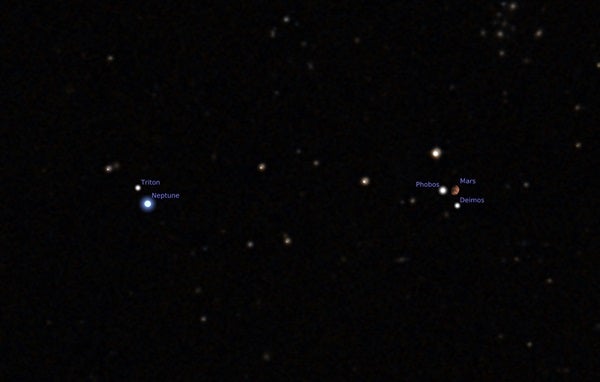The ruddy world shines at magnitude 0.1, as bright as any other early evening object, against the faint backdrop of Aquarius the Water-bearer.
As you gaze at Mars with your naked eye, you might assume it’s the only object of interest in the area. But target the planet through binoculars or a telescope and you’ll also see the much fainter glow of Neptune.
The magnitude 7.9 ice giant lies 23′ east-northeast of Mars this evening. The two switch positions tomorrow night, with Neptune 16′ southwest of Mars. (The magnitude 6.1 star 81 Aquarii then stands 12′ north of Mars.)
The actual conjunction between the two planets occurs at 9:08 a.m. EST on the 7th, when Mars passes 2.2′ north of Neptune, but both objects then lie below the horizon from North America. When viewed through a telescope, Mars appears 9″ across while Neptune spans 2.3″.
For more quick and easy observing tips, make sure to check out The sky this week for November 30 to December 9.










